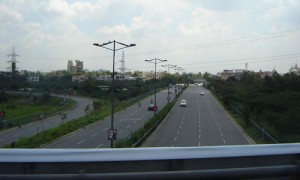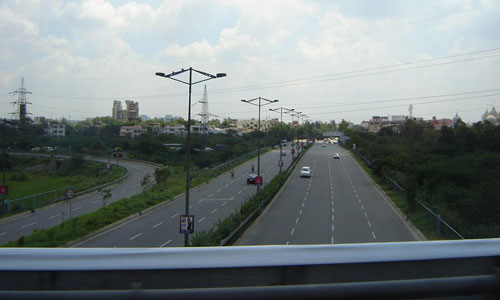Bottom Line: Expressways across the country are redefining the distance and connectivity, with the holistic growth of the regions along the route.
 A TV advertisement recently showed an old man entering into the past time zone. He is being stuck in traffic and pollution but suddenly awakens to the reality of expressways & highways to understand how much the country has progressed over the years in terms of infrastructure and cross connectivity.
A TV advertisement recently showed an old man entering into the past time zone. He is being stuck in traffic and pollution but suddenly awakens to the reality of expressways & highways to understand how much the country has progressed over the years in terms of infrastructure and cross connectivity.
Well, the advertisement might have seemed as an over-projection India’s progress but what can not be doubted is the fact that expressways across the country are redefining the distance and connectivity, with the holistic growth of the regions along the route.
To say that the expressways are the future of long-distance motoring in India would be stating the obvious. The government wants 11,500 miles of “controlled-access highway” to be built by 2022. The country’s main highways, which comprise 2% of India’s roads yet carry 40% of the traffic, are to be widened and improved as well.
This, unfortunately, is one side of the story. While India aspires to be among the best of global case studies in the highways & expressways, the ground realities often come as a road block that threaten to derail the inevitable march to fast forward mode of transportation. Following facts indicate two different realities of expressways:
Government of India will construct 1,000 kms of expressways under its flagship road building programme National Highways Development Project at a cost of Rs. 16,680 crore
Mumbai-Pune Expressway has not only connected the two cities seamlessly but has been catalyst to economic revival of the adjoin regions
Several expressways of NHAI are either incomplete or have failed to take off
The $2bn expressway from Delhi to Agra remains empty, with developer looking for ways to exit this PPP project
India’s longest expressway, an eight-lane, 1,047-km from Ballia to Noida, the Ganga Expressway along the river Ganges remains non-starter
Dwarka Expressway is home to lakhs of new residential units, yet the project is facing repeated hurdles and road blocks
The fundamental question is that to what extent expressways in India have changed the urban dynamics. If expressways have changed the travelling time, distance & experience why is there so much of resistance? Have expressways failed to revive the economy of the region surrounding it? How much catching is to be done and are we anywhere close to the global benchmarks? There are unfortunately more questions than answers.
Vineet Relia, Managing Director of SARE Homes maintains that road sector of any nation is the most critical factor for economical and social development. He points out to reports that suggest 1% growth in infrastructure leads to an equivalent growth of 1% in the GDP.
“To augment road sector and ensure quicker connectivity, in the recent years government has fast tracked the investment process for the sector and has announced many new expressways. However, the sector is still at a nascent stage and there is a lot more to do in terms of improving the last mile connectivity,” says Relia.
Kishor Pate, CMD, Amit Enterprises Housing feels India’s pace of urbanization cannot be compared to most developed countries. “There are several limitations related to technology, funding and political will which play a role in the deployment of expressways in India. That said, India does have several success stories, not the least of which is the Mumbai-Pune Expressway.”
Experts point out that the success and potential of expressways is unquestionable. Yet if there are two different tales to tell it is because in the Indian context the planning and implementation varies from one region to the other. For example, the main criteria for selection of expressway corridors must be the traffic volume and the project should be approved to the highest density corridor.
Then the land acquisition should be tackled more professionally and the PPP model should actually be the partnership and not a relationship of contractors and owners. If expressways are developed professionally, it can definitely change the urban dynamics of the region.
For example, the stretch between Jaipur and Delhi has seen immense industrial activity and is crucial as part of the golden quadrilateral. This is one of the best examples for success stories in the expressways sector. The upgradation of the project has immense impact on the social and economical growth of the connecting districts. The expressway has not only diminished the travel time but has also opened up opportunities for industrial as well as urban development of the locations and allocated the base for tourism and other associated commercial industries.
“Locations must not only be well-connected, but viable on all other fronts as well. If the quality of real estate being developed in a location is sub-standard, properties are overpriced or if projects there are chronically delayed, the area will not pick up despite excellent connectivity,” sums up Anil Pharande, Chairman – Pharande Spaces.
By: Ravi Sinha





